
Rare earth magnets for fun and profit
Review date: 22 September 2001.Last modified 08-Jun-2013.
One can academically appreciate the fact that every electric motor in the world (not counting a couple of very impractical ones) works because of magnetism.
One can reflect on the fact that every transformer uses it, too.
CRT monitors, TVs, brushless DC motors, power meters, modern welding gear and engine ignition timing systems, various vending machines and umpteen other gadgets use permanent magnets. And electromagnetism has a hand somewhere in making practically every other electronic device work.
To get a true, visceral appreciation for magnetism, though, you can't beat playing with magnets.
Really terrifyingly freakin' strong magnets, by preference.
When I was a kid, I had a bag full of black ferrite magnets of various shapes and sizes. They were fine toys. I could not hurt myself with them.
I've grown up now. Well, physically at least. And so I've graduated to these.
"These", in this case, are neodymium iron boron (NIB) magnets. They're commonly just referred to as "neodymium" or "rare earth" magnets, and this composition is both more powerful and cheaper than the previous king of the permanent magnet world, samarium cobalt.
How strong?
Well, the smallest magnets in the above picture are little gold-plated cylinders only 6.4 by 2.3mm in size. The field extending from these magnets doesn't reach far with any strength, because the smaller a magnet of a given intrinsic strength is, the smaller will be the volume of space it can fill with a magnetic field of a given strength. Magnetic field strength drops off as the inverse cube of the distance from the magnet, too; get twice as far away and the field strength drops by a factor of about eight. So two of these little tackers barely notice each other over a distance of more than an inch.
But just tossing one of these tiny 'uns in the vague vicinity of another will cause them to click together end-to-end. And they do it strongly enough that I can hold the one on the end of a full stick of 12 of 'em and twirl the rest around as fast as I can, without them letting go.
The strongest magnets in this collection, if you ignore the large-surface-area but thin and fragile hard drive magnets (of which more in a moment), are the 18.25mm-diameter spheres. Spherical magnets, mercifully, tend to push your fingers out of the way as they head for each other, so these ones aren't too prone to pinching people. But they can certainly do it, and playing with them without letting them smack together so hard that they damage themselves is easier said than done. These magnets are all covered with protective metal plating, but careless play will flake it off quite quickly, and the NIB material itself is quite fragile.
This collection of magnets is three "grab bags" worth, from ForceField, who seem to be pretty much the only really serious sellers of a proper range of cheap surplus rare earth magnets on the Internet at the moment.
They're still not dirt cheap, mind you. I bought three $US20 grab bags on Ebay, and got 81 magnets as a result; they'd all easily fit inside a cigarette packet, if not for the fact that they'd roll it up into a ball if you tried. But it's a respectable collection, nonetheless.
There's an assortment of rods, discs, rectangular prisms and spheres, and there are only three of the usual flat-banana-shaped surplus hard drive magnets. Those magnets are massively strong, just like any other neodymium, but their odd shape makes them unusually fragile. Magnets of more Euclidean-solid shape are more useful.
The ForceField grab bags seem to be the cheapest way to get hold of these things, short of getting old dead hard drives for free and ripping them to bits. But you can do that, too. I'll show you how in a moment.
First - feats of strength.
Field strength
Any time people talk about super-powerful magnets they have to show pictures of big metal things dangling, so here some are.
That's a 15 inch spanner hanging there along with the other ironware. The sphere holding the main string of tools is only about two thirds of the way to holding its maximum load. Getting the four tools in that string balanced was slightly tricky, but not because of any lack of magnet power.
These are a couple of little 3/8th inch disc magnets at work. The one at the top couldn't hold a lot more. But whaddayawant from something smaller than the average button?
ForceField have some more heavy-lifting pictures on their demo images page.
Magnetic field strength is measured with two units, the Gauss (G) and the Tesla (T). 1T equals 10,000G.
The earth's natural magnetic field is about 0.5G, depending on where you are - it's weaker at the equator and stronger at the poles. It's also slowly declining at the moment, which is something that it does periodically; geological evidence shows that it's actually reversed several times over the planet's life. The mental giants at the Institute for Creation Research use the decline of the field strength to prove that the planet's only a few thousand years old.
In case you're wondering, this, like various other of their proofs, doesn't stand up too well.
But I digress.
The strongest cheap ferrite magnets have a field strength at their poles of around 1000G, or 0.1T. NIB rare earth magnets, on the other hand, have surface field strength of about 1T. Ten times stronger.
The size of a magnet has a lot to do with the perceived strength of its field, though. None of these magnets are very big, so that inverse-cube-law field strength reduction bites into their power quite quickly.
Chisel the huge ferrite disc magnet off the back of a large dead speaker (if it wasn't dead before you started chiselling, it sure will be when you've finished) and you'll have a magnet with only about 1000G field strength, measured at the peak strength areas on its poles. It's a ferrite. That's all you get.
But big speaker magnets commonly weigh more than a kilogram and are several inches across. The peak strength areas at the poles are thus already a few inches away from the middle of the magnet's field. In this case, you can move another few inches away and still have 1/8th field strength.
So if you wave one of these big magnets over a pile of nails, they'll leap up to stick to it from several inches away.
Take a 1-Tesla-field-strength neodymium magnet the size of a button, though, and the peak field areas on the outside of the magnet will only be a couple of millimetres away from the middle of the field. Now moving just another couple of millimetres away gives you 1/8th field strength. Field close to magnet stronger; field far from magnet weaker.
That said, 1T power is still pretty darn impressive. Most current-model Magnetic Resonance Imaging (MRI) machines only have about 1.5 Tesla field strength, for comparison.
The reason why an MRI machine is a giant contraption that needs liquid nitrogen cooling, rather than a neat little metal-plated lump that you can buy over the Internet, is twofold. It's partly because the MRI machine is also a sensitive radio receiver, detecting the radio-frequency energy emitted by the magnetic nuclei in the patient's body when they interact with a strong magnetic field. But it's mainly because a 1.5 Tesla MRI machine is creating a 1.5 Tesla field over a large enough volume that a patient can be stuck into said field.
(Actually, the coolant around the magnets in an MRI machine is liquid helium; liquid nitrogen is in the outer, warmer vessel of older-model MRI cryostats.)
By the same token, junkyard car-lifting electromagnets only have about 1T field strength, but they generate that field over a big enough volume that their total lifting capacity, for conveniently steel-bodied cars, is massive. The coils under their protective armour draw at least a few kilowatts, and maybe considerably more - 20kW isn't out of the question for a big car-lifter.
You're not going to be lifting any Toyotas with a five buck magnet from anywhere. Nails will hop up only about an inch to hit the strongest of the magnets in the ForceField grab bags. In contrast, ferromagnetic objects of all types will fly across a room to make friends with an MRI machine, as occasional accidents attest.
Because of their limited field size, small neodymium super-magnets like these ones aren't actually much of a problem to deal with, at least as far as messing up your monitors and erasing your credit cards and wiping your video tapes and being hit by flying spanners goes.
Yes, when I had one in my back pocket, I at one point found myself unexpectedly attached to the washing machine. But the rapid diminution of the field strength means that you can hold the strongest of these magnets - the three spheres end-to-end, for instance - in your hand and wave them around a mere foot and a half from a computer monitor, and notice only slight image distortion and discolouration. Move the magnets further away and the effect vanishes.
Touch those same magnets directly to the screen, mind you, and they'll magnetise the heck out of the shadow mask and leave you degaussing until practically all of the world's cows have come home, had a nice sleep and gone away again. I own a degaussing wand...
...but I am not confident enough of my skill with it to deliberately Magna-Doodle all over a monitor just so you can see what it looks like. Sorry.
Quite big rare earth magnets can be had, if you want more field range. There's this one, for instance, which only has about 1.1 times the volume of a ping-pong ball, but which ForceField warn you not to buy unless you're confident that you know how not to crush, blind or mangle yourself with it.
As far as terrestrial magnetic fields go, 1T is quite strong, but it ain't much by the standards of the universe. Neutron stars and pulsars (which are spinning neutron stars) have magnetic fields. If they were made of nothing but neutrons then they wouldn't, but they've also got superconducting superfluid protons and various other exotic forms of matter, so they have.
They get just about the whole magnetic field of the normal star they once were, squished into their city-sized diameter.
The magnetic field strength on the surface of a pulsar has to be at least several million Tesla, and may range as high as a thousand million Tesla. That's more than strong enough to seriously deform electron orbits and make matter do very, very strange things, regardless of whether it's the sort of matter that normally cares about magnetic fields or not.
This magnetic field would certainly kill anybody who tried to land on a pulsar. Except for the fact that they'd have been very conclusively killed already by radiation and/or gravity gradient. Plus, landing on something that's spinning fast enough that its surface whips past at kilometres per second - in some cases, thousands of kilometres per second - presents a bit of a challenge in itself.
But, again, I digress.
Drive magnets
Want free rare earth magnets? Got a dead hard drive? You're in business.
What, you might be wondering, are super-strong magnets doing inside a magnetic storage device? You're meant to keep magnets away from your drives, aren't you?
Well, yes, you are. A sufficiently strong magnetic field across the storage surfaces can destroy data in short order. And, since the drive platters spin rapidly, a magnet sitting on one side of them will present a nice oscillating field over the whole disk, from the platters' point of view.
But this is one of those situations like putting metal in a microwave oven. Popular wisdom is "Don't do it, ever", but that's only because the situations in which you can do it safely are complex enough that it's not a good idea to tell all and sundry about them, in case they get it wrong.
Hard drive manufacturers know it's OK to put magnets in a hard drive. Which is good, because no modern drive would work without one.
Old hard drives use stepper motors for their head positioning. Stepper motors rotate by one precisely defined small amount - one "step" - every time they're fed a current pulse. Which makes them a good way to make something like a hard drive read/write assembly move by the small steps needed to position it accurately over tracks on the drive.
Steppers are slow, though, and they're position-sensitive (the heads will end up in a slightly different place if the drive's tilted), and they're sensitive to temperature changes, and they wear out.
An alternative head motor design, which is used by all drives these days, is the voice coil. There's a coil next to a permanent magnet; when current's passed through the coil, it creates its own magnetic field, which interacts with the static field from the permanent magnet, and moves the head arm one way or the other depending on the direction of the current.
This motor design isn't at all precise, so there are "servo tracks" on the drive platters, which the heads read to allow the drive to tell where they are. That information lets the drive use a feedback mechanism to get very good precision. Presto, cheap super-high-track-density commodity hard drives.
Voice coil motors are better than steppers, because they have no temperature or position sensitivity to speak of, they're fast, there are no motor bearings to wear out, and they cost less.
The reason why these motors are called voice coils is that the early ones had the same straightforward cylindrical design as the voice coils in speakers. So that's the name they got. Then came various curved-magnet designs, but nowadays consumer drives all have simple swing-arm motor arrangements, with flat bent magnets that're magnetised lengthwise - with a pole at each end.
If you've got yourself a dud hard drive that you'd like to relieve of its magnets, it's easy enough to do.
You'll very probably need a Torx ("star") screwdriver set to get into the drive. You can engage Torx screws with Allen keys or a flathead driver of appropriate width, but that's not an optimal solution. Fortunately, Torx quarter-inch hex bits will do the job, and are cheap; you need just one hex bit driver to match, and they're cheap too.
All it took to get the lid off this 1.2Gb Seagate was peeling off the sealing tape around the sides. Built for combat, this drive was not. But the parts inside are attached with Torx screws.
Commodity hard drives these days aren't the big-magnets goldmine that old voice coil drives were; if you can find yourself a 5.25 inch full-height voice coil monster drive, you'll get better magnets out of it. Advancing technology has allowed the manufacturers to make do with fewer and smaller magnets.
Inside the Seagate there's just one magnet - it's the thing above the coppery voice coil, here.
Here's the head assembly and magnet bracket removed from the drive. You have to remove the platters to remove the head assembly. Just unscrew everything in sight and it's easy enough to slide out the platters, which frees the heads and lets you lift everything out.
The two-piece magnet holder in this drive was, as usual, held together only by the strength of the magnet - but that's plenty. The holder effectively contains the magnetic field to the small gap that the voice coil sits in; there's a little magnetism on the outside of the holder, but it can barely hold a paper clip against gravity. This is why the magnet doesn't damage data, despite being right next to the platters.
The magnet in this drive is attached to its base plate with a few dots of glue, some little locating nubbins, and, once again, its own bodacious magnetic field. There's nothing wrong with leaving a hard drive magnet attached to its base plate, if you don't need both sides of it uncovered. The steel plate makes the magnet much less prone to breakage. NIB magnets are brittle, and flat thin hard drive magnets commonly snap while people are playing with them.
Here's another hard drive magnet assembly, with four separate magnets this time. These are neodymium magnets without any protective plating; under the shiny plating, all neodymiums look like ordinary ferrites.
Because it's so easy to get magnets out of hard drives, there are lots of these things in the surplus market. ForceField have a few of them.
Hard drive magnets have their uses, but less fragile shapes are better for many applications.
Like what, I hear you ask.
Stuff to do
Apart from making all of your magnetic science experiments work the way they're meant to (NIBs make it easier to push a grape, and they bounce better, too), there are useful things you can do with rare earth magnets.
No, really, there are.
I've used the things as general hold-downs for things that I want to sit still on a ferromagnetic surface. I've used one to make a magnetic latch for a window screen. I've also used them as screw holders - pretty much any magnet will do for holding screws removed from some gadget you're taking apart, of course, but with a NIB magnet you just have to toss the screw vaguely near the magnet and it'll leap onto it.
You can use NIB magnets to hang tools from, as shown above, but they can work as an impromptu tool belt as well. Instead of dropping that pointy screwdriver into your pocket, where it'll do its best to make a hole in the lining and, subsequently, you, you can put a magnet in your pocket instead. Now, you can stick the screwdriver to the outside of your jeans. And it'll danged well stay there, too.
As will rather larger objects.
Use of mystic voodoo words and magic hand-movements as you adhere tools to your clothing may be called for, depending on the size and gullibility of your audience.
Those who appreciate bodily adornment can adhere a ferromagnetic bauble to their earlobe - or any other fairly thin body part - by putting a little NIB magnet on the other side. Use a couple of the big spheres on either side of your hand and you look like a very hard-core body modifier. Use big magnets on your ears and you will shortly look like an incompetent boxer.
There are, of course, lots of other experiments, simple and complex, you can try. Done with ferrite or alnico or simple steel magnets, they're underwhelming. Done with NIBs, they really work.
This is only scratching the surface of things that can be done with powerful magnets. If you want to make your own permanent magnet electric motor (which can be very simple) or alternator, neodymiums will make it work better than any other kind of magnet. Want to play with diamagnetic levitation? Can do. Do you prefer superconductor levitation? No problem.
And then there's art. You can make sculptures out of rare earth rod magnets and steel ball bearings; there's a toy that works this way, too.
And then there's magnetic braking.
Move a high-powered magnet around on a thick non-magnetic conductive surface - a slab of aluminium or copper, for instance - and you can easily feel magnetic braking at work. The stronger the magnet and the more metal there is (the base of a chunky CPU cooler is an excellent candidate for this experiment, and I've got a few of those kicking around...), the stronger the "syrupy" feeling you'll get. The magnet isn't attracted to or repelled from the surface, but it just doesn't want to move.
The reason this happens has to do with Lenz's Law. When the magnetic field around a conductor changes - because it's being moved past a magnet, for instance, or because a magnet is being moved past it - a current is induced in that conductor. This happens even if the conductor is just a chunk of metal that you're holding in your hand. Lenz's Law states that the current induced in a conductor by a changing magnetic field will flow such that it will produce its own magnetic field which opposes the original change in the external magnetic field.
So, basically, when a conductor moves relative to a magnet, the current induced in that conductor tries to stop it from moving. The bigger the field change - because of a stronger field, or faster movement - the stronger the braking force due to Lenz's Law will be.
I've got a piece of aluminium tubing with a half-inch outside diameter and a 3/8th inch bore, which happens to just neatly fit the little disc magnets from the ForceField grab bags.
The tube's 157cm long. Drop these disc magnets, or pretty much anything else, from a height of 157cm and they'll take about 0.57 seconds to hit the ground, thanks to the 9.8 metres per second per second acceleration of gravity.
A couple of the discs stuck together (to stop them tumbling) and dropped down the tube, though, take almost exactly 30 seconds to emerge from the other end. Magnetic braking.
Magnetic braking is used for oscillation-damping purposes in all sorts of things. You'll find magnetic dampers on laboratory balances, for instance; a simple aluminium or copper tag on the end of the balance arm, moving between two strong magnets attached to the balance's frame, is the perfect way to stop the balance from oscillating for ages before settling on a reading. You could damp the pivot point mechanically instead, but then it could stick in a slightly off-balance state. Magnetic damping has no stickiness.
Before strong enough magnets to make magnetic damping practical were available, scientists had to be able to read the centre point of an oscillating balance. It was normal to take your reading before the thing had stopped swinging.
Magnetic dampers are used in a variety of other hardware, too. Turntable tone arms, for instance - generally the ones that look like part of an electron microscope. And better surveying telescopes, which need to be, and stay, level. Not to mention, of course, home-made seismometers.
And some rather larger gadgets.
And then there's magic. Magicians like to refer to neodymium and samarium cobalt magnets as psycho-kinetic or "PK" magnets, because those are the sorts of tricks they're commonly used in.
ForceField have a list of serious and not-so-serious magnet uses here.
Oh yes. There's also...
Ferrofluid
Ferrofluid is, to use the proper scientific term, freaky.
It's a colloidal suspension of minuscule (roughly ten nanometre) magnetite particles in a liquid base. In English, that means it's magnetic liquid.
It's possible to make the stuff yourself, but normal humans will do better to buy some. I ordered a 100ml bottle for $US30 plus shipping from Educational Innovations, who sell all sorts of things that science teachers need. Or don't need, but want anyway, because if you're going to have to deal with annoying teenagers all day for not enough money, you might as well play with some cool toys by way of compensation.
In the absence of a magnetic field, this Ferrotec EFH1 ferrofluid looks like rather runny black machine oil. It's only got a viscosity of 6 centa-Poise (cP) at 27 degrees Centigrade; water's viscosity is a hair over 1cP.
Put a magnet under it, though...
...and things get weird. The interaction of the magnetic field, the surface tension of the ferrofluid and gravity results in the formation of stable spikes of liquid. The spikes are still liquid - touch one and you'll just get an oily finger - but if you don't move the magnet, they look like a solid sculpture.
The stronger the field, the smaller the spikes. In the weedy field from a ferrite magnet you'll get just a smooth mound of fluid with a few spikes where the field is strongest, but the spikes get a lot smaller when you're playing with one of the bigger neodymium magnets.
Here, the ferrofluid's on a china plate, and the two flat hard drive magnets from the ForceField collection are under the plate (and stuck quite firmly to it by their attraction to the fluid). The drive magnets have a very intense field close to their surface, so the spikes are tiny.
This is the three large spherical magnets, stuck together end to end and lying under the plate. A fairly strong field at each end with a noticeable tendency towards the other end, and a weak field from the ball in the middle.
Three doughnut magnets in a row. Not a very strong field, but interesting lobes.
Ferrofluids are weak magnetic materials - they have a low "saturation magnetisation". The saturation magnetisation, measured in Gauss, is the maximum value of the magnetic moment per unit volume when all the domains are aligned. In English, it's how strong the attraction will be between a given substance and a magnet of a given strength. This ferrofluid's got saturation magnetisation value of 400G, compared with 17,000G for iron.
With a neodymium magnet pulling on it, though, 400G saturation magnetisation is quite enough to make ferrofluid defy gravity.
Some smaller neodymiums in a test tube, lined up to attract the magnets that are already hanging from the bottom of the plate in which the ferrofluid's sitting. Ferrofluid flows upwards in a, frankly, fairly disturbing way, until equilibrium is reached.
Let the test tube down until it touches the plate and you get this "frozen splash" spike formation.
Lift the tube up again and it's got its own little spiky Afro.
The base liquid in this ferrofluid is mineral oil, so it won't evaporate noticeably, unless you wait a really long time. On the down side, the stuff coats every surface it comes into contact with, and you can't magically haul it off that surface with a magnet. Not quickly, anyway.
Leave it for a while, though, and most of the ferrofluid on a surface will migrate towards a nearby field.
This petri dish and its lid were well coated with ferrofluid after I'd been playing with magnets above and below it, but a day later when I took this picture, all but a thin film had been sucked in to the magnet I left stuck to the bottom of the dish.
Still pictures are all very well; you've really got to see the stuff in motion, though.
Accordingly, feel free to download this 986 kilobyte MPG clip of me waving a magnet around under the petri dish.
In case you're wondering what the heck this stuff is good for, the answer is: Lots of things.
You'll see ferrofluid referred to a lot when people talk about hi-fi speaker drivers, because it's used as a damper fluid to reduce unwanted resonances, and for cooling too - the fluid conducts heat from the coil to the magnet structure much better than a plain air gap would. The strong magnetic field in the voice coil gap of a speaker driver is more than adequate to hold the ferrofluid in place. Ferrofluid damping is used in various CD-ROM and DVD-ROM drive pickup actuators, too.
If you want to seal a rotating shaft with a pressure differential across the seal, or in a high-speed situation where you really don't want dust getting in, you can use ferrofluid, retained by a magnet around the seal point, as a "liquid O-ring" that won't wear out.
Ferrofluid based on a volatile carrier liquid can be used to trace magnetic fields in things - you can paint it onto a magnetic tape, for instance, wait for the carrier to evaporate, and then microscopically examine the particle pattern that's left.
There's no shortage of scientists playing with "smart fluids".
Incidentally, since this stuff ended up costing me about one Australian dollar per cubic centimetre, I was interested to see how much of it I could recover from a fluid-covered plate that had already dripped about all it was going to drip. The stuff behaves like oil and can be cleaned off surfaces with the oil-cutting volatile solvent of your choice, but I wondered whether doing this would damage the surfactant on the magnetite particles, or otherwise screw up the colloidal suspension.
So after taking various of the above pictures and draining off most of the oil, I washed off the plate I was using with electronic cleaning solvent, decanting the result into a spray-can cap. The dilute ferrofluid/solvent mixture still reacted to a magnet, but not at all strongly - a vague mound of fluid following the magnet around was the best it managed.
I evaporated the solvent by floating the container in a saucepan of boiling water. When the mixture stopped bubbling, I took it off the heat and tested it again. Result - lots of lovely little spikes. It seemed to be good as new.
Mind you, a great big splodge of ferrofluid on a plate only yielded maybe one cubic centimetre, at most, of recovered liquid. But if you're clowning around with the stuff all the time, then you might as well not end up throwing away lots and lots of expensive black magnetic paper towels.
If you want to see some more artistic ferrofluid fooling, check out this, this and this.
It's like a real-world screensaver.
Field viewing film
Related to ferrofluid but less freaky - and cheaper, and less messy - is this stuff.
It's magnetic field viewing film, and here it's sitting on top of a few NIB cylinders. Where the magnetic field through the film is strong, the translucent film turns dark. Where there's no field, it stays its native green colour.
A ring of the big sphere magnets (Forcefield kindly sent me a couple more of them along with this film, and some other bits and pieces).
A ring of little spheres, surrounded by the tracks left by waving the film around over the magnets.
The film holds whatever field image it last saw, so you can draw Magna Doodle patterns on it if you like.
Field viewing film behaves as it does because it contains a colloidal ferromagnetic slurry (another flavour of ferrofluid, basically), held in place by "gelatinous membranes". When the nickel particles are floating free they let a reasonable amount of light through; when they glom together in a magnetic field, they look dark.
The film's cheap (three US bucks for a three-inch square from Forcefield; $US12 for a six inch square), and it reacts satisfyingly to quite mild fields.
Dragging the edge of a fridge magnet across it left this pattern.
I managed to get noticeable intensity changes with a very dinky electromagnet, made out of a hook-up lead wound a few times around a spare AA battery and powered by four more flat rechargeable AAs. And sitting the film on top of some old ferrite magnets revealed otherwise invisible irregularities in their fields. So this stuff could easily be used to detect current flow in a wire, or for easy magnetic product quality control.
Forcefield have a page with more viewing film pictures, here.
Daft ideas
For as long as the mystic power of magnets has been known, people have been trying to do more mystic things with them than are actually possible. Rare earth magnets make a lot of independent thinkers very excited.
First, there are all of the medical applications. Lots of people believe in using magnetic bracelets and bandages and insoles and who knows what else to cure what ails 'em, and what ails their animals, too. A Web search with the right combination of words (like this one, for instance) will give you magna-therapy sites galore.
People even use the things to help them deal with pain from cancer. This article claims that Americans manage to spend half a billion US bucks a year on therapeutic magnet products.
Well, at least part of that must be because "medical magnets" tend to cost a lot more than apparently identical - or, often, more powerful - ones from places like ForceField. There's not much reason to believe that the things actually have any non-placebo effect in humans or animals, despite occasional positive studies, but if you're going to do it, you might as well do it the cheap way.
Oh, and magnets will make you live forever, too. Well, OK, maybe not, but Alex Chiu's not dead yet, is he? And he's a celebrity!
Personally, I think The Onion said it best.
If you don't believe magnets'll prolong your life, there are plenty of other crackpot theories involving them.
Fuel and water treatment, for instance. Strap magnets onto water pipes and/or fuel lines, watch your water get cleaner or your car run further on a tank of petrol.
Magnets can be useful in engine-preserving applications; a magnetic sump plug will collect any stray metal shavings in the engine oil, for instance. But that's not the idea, here. Something much more mysterious is meant to be going on, at the molecular level.
ForceField have a page about magnetic water treatment, but it's not about how they believe in it - it's about how you can build a magnet-doohickey using their products that's far more powerful than far more expensive commercial units. Whatever, if anything, the commercial units do, you can do for a lot less. Fair enough.
Similarly, if you just know you can make a perpetual motion machine if you just put enough darn gears in there, and maybe another three gyroscopes and an endless belt with sponges on it, you might as well get the magnets for your contraption from a place that won't charge you too much for 'em. The proprietors of ForceField seem to believe in the Laws of Thermodynamics, but if you have different ideas, they'll sell you whatever you want.
Mind you, if that's really your goal, it seems a lot easier to get rich by just following these simple instructions, which explain how to make people think you've invented perpetual motion and/or free energy, without the tiresome requirement that you actually do it.
Get some!
If you're sitting there wondering why you read to the end of this page, and have not the slightest urge to crack an old hard drive or buy yourself a bargain bag or two, that's OK. But everyone I know really digs these things.
If you like playing with (relatively) cheap things that would have been priceless 20 years ago - five dollar lasers, gigahertz CPUs, super-bright LEDs - then allow me to highly recommend a little bag of rare earth magnets as a fine addition to your fiddle-toy arsenal.
Heck, you may even find them useful.
And then, there's this
I could tell you what this is, but you might as well just click here.
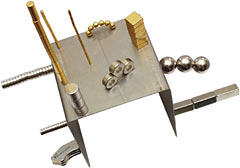


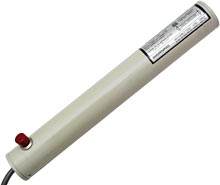

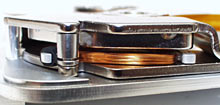

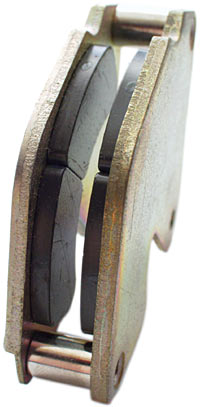

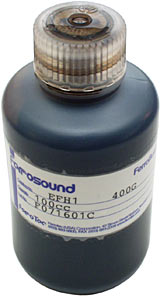
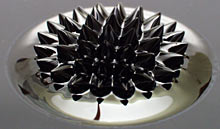
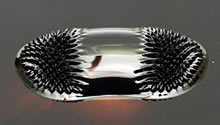
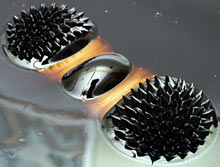
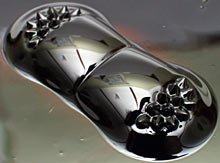
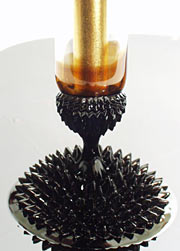

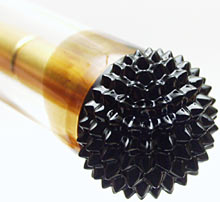

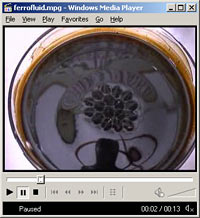


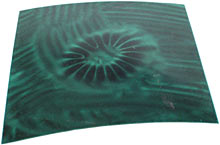
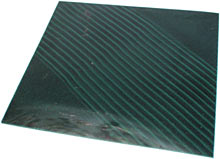
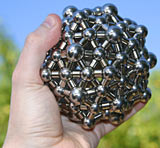

![[SecureWebs]](images/sw.gif)